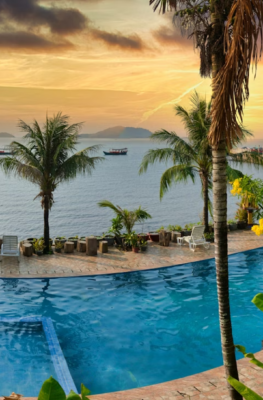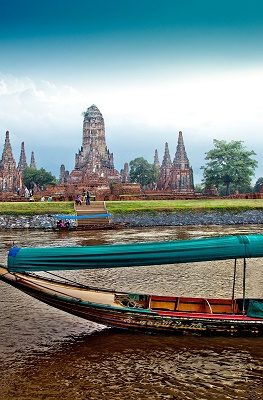Published on December 1, 2014
From Cambodia comes a special style of folk wrestling known as Bok Cham Bab. It’s unique because of the fact that women participate(d) in this wrestling style. Nowadays it is quite accepted that women are treated equally in almost every sport, but in ancient times (Bok Cham Bab dates back to the Angkor period) some cultures were far ahead of times in that respect.
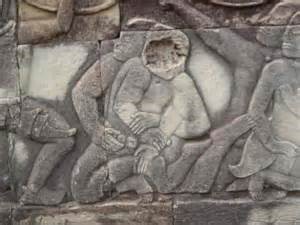
Khmer Wrestling as pictures on a bas relief at the Bayon Temple, Angkor Wat, Siem Riep, Cambodia; Source: http://saloeurn.net
In this ancient way of wrestling, wrestlers dress in colorful loin cloths (gonsain), starting with a lengthy dance, which could last several minutes. While whirling around the mat, the dancing – almost as important as the wrestling itself – takes the look of various animals, such as the monkey, the crocodile, or the dragon. It serves the dual purpose of warming up the wrestlers’ muscles, and paying respect to their trainers. Then, upon a signal, they tear at each other with passion, trying to throw one another. The accompanying drums are beating faster, the music keeping the pace of the match, stimulating the participants, who almost look like crocodiles locked up in a battle to death. When neither will gain an advantage the fight will be broken off, the dance resumed.
This might go on for a while, with participants alternately dancing and wrestling. The aim of the game is to throw the opponent on the ground and to push him or her to touch the floor with either chest or shoulders. It’s up to the referee to declare a winner of each of three rounds. Overall winner is the one who is the proclaimed winner of two out of three rounds. One needs to be very skillful, the only weapons allowed to be used being arms and legs.
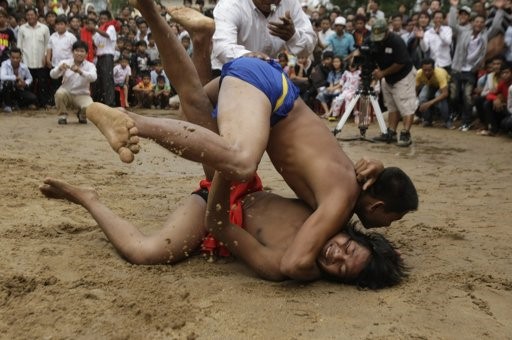
Traditional Khmer wrestling, Cambodia; Source: www.flickr.com
In the past, this sport served three important roles in Khmer life: preventing fighting; keeping the body healthy and enabling to fight in a battle if need be. It also became a means of choosing tribal and regional leaders: the best wrestlers were the strongest and most powerful; therefore selected to control existing and newly acquired land.
During those times wrestling training schools did not exist, hence the elders trained the children of the village. Recruitment of the best was done by them on the first full moon night after the harvesting period, selecting young men with similar age, weight and height to compete.
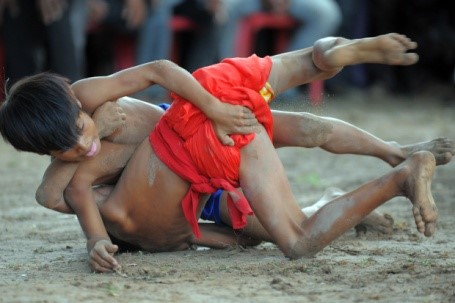
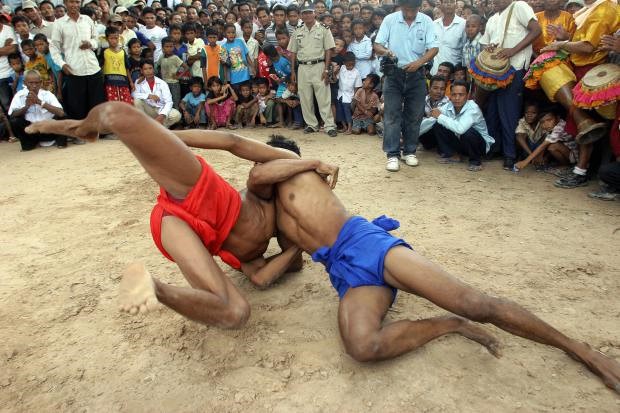
Touching the floor to score; Sources, a/o: www.Mardb.com; www.findsportsnow.com
The empty village rice paddies would double as a wrestling training ground to pass along the rules and techniques. The tradition of wrestling in the moonlight can still be observed at festivals and holiday celebrations of the Cambodian people, signifying the importance of wrestling roots in the culture.
Nowadays, the younger Khmer generations wrestle no longer for the honour only, but mostly as a competitive sport. They also take part in it for fun on special occasions, such as Khmer New Year (April) and Bonn Phchum Ben (All Souls Day, end of September, early October) and Bonn Kathen (End of Lent, October/November) festivals.
If you would like to view a traditional sport first hand, try to plan your holidays to Cambodia around those days. You won’t regret it!



